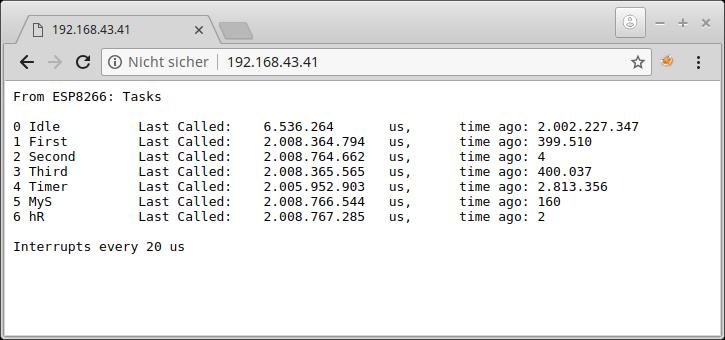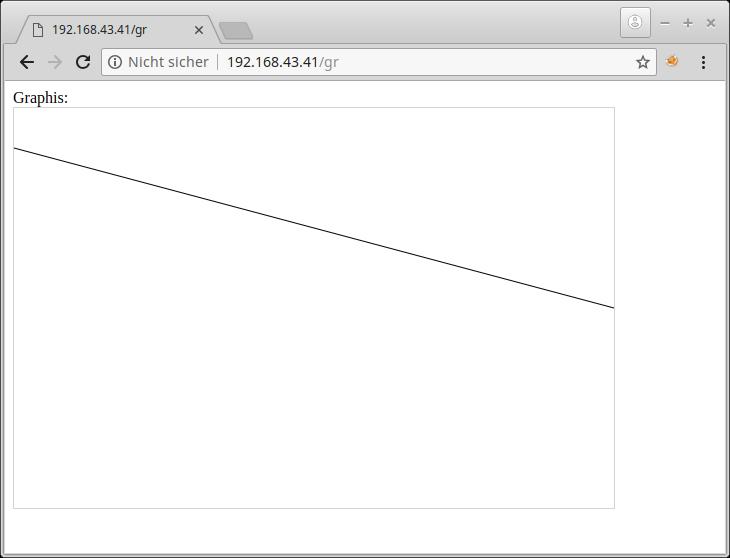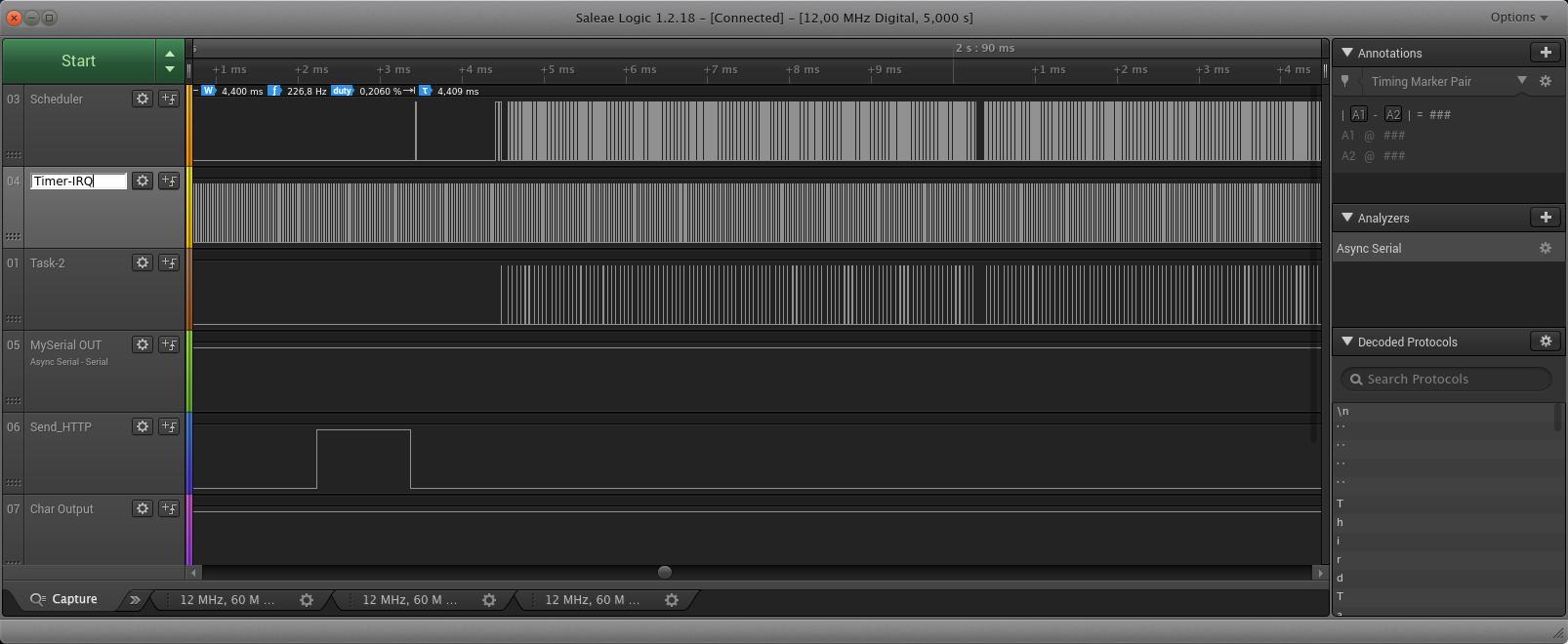Reference: Here is a Version (Stack Change) for
_________________
** Arduino Uno **
_________________
with much more documentation concerning the basics of
cooperative multitasking with CoopOS
https://github.com/MacLeod-D/Arduino-Multitasking-CoopOS
CoopOS exists in 2 Versions:
-
The "pure" Version. It uses standard Ansi-C, is prozessor independent
and the fastest version. My prefered version.
But it has some drawbacks:- taskBegin, taskEnd surrounding the while-loop
- all local variables must be static !
- some restrictions using taskSwitch in for-loop and switch/case
- taskSwitch only allowed in tasks, not in called functions.
-
The "Trampolin" version. It saves and restores processor registers - so
it is processor depedent (using assembler code).
That's why it must be ported to each new processor - and why it's slower.
But it does not have the limitaions of 1)
This is version 2) - I've been asked for it.
ESP8266 software (for Arduino IDE = NON RTOS SDK) contains the mysterious
cont.h, cont.S - which are the base for multitasking.
But as far as I know nobody built a Scheduler around it until now.
This shows, how to do it.
This is not a real program, but a template for your own creative work.
What it does:
1) Cooperative Multitasking The Scheduler calls (inited) tasks. They do a little bit and return cooperative to the Scheduler. The Scheduler decides, which task (time, priority) has to be called next and call that task . and so on. It is possible to init new tasks while the Scheduler is running !
Here the Esp8266 (160 MHz) does up to 85000 TaskSwitches/s !
2) WebServer A WebServer is included. It shows (ip.address/) a list of all tasks with last called time and with (ip.address/gr) an animated canvas graphics which is automatically updated each 2 s.
3) A buffer mechanism to handle serial output for smooth buffered serial output using a task.
4) An Interrupt-Routine which is called every 20 microseconds. This interrupt routine is working
during ip data transfer - while the scheduler may be blocked for some milliseconds.
IRQ may start tasks with highest priority. They run after the HTTP-sendOn... has finished.
5) A Debugger which can be used with serial line. It stops the scheduler and is able to analyze the state of the program - and continue, where it was broken. This Debugger may be extended to be used with a browser!
6) Measuring time with a resolution of 12.5 NANOSECONDS is shown.
I think it is a good template to start with - have fun with it.
Copy the subdir to your Arduino Sketch folder -no library.
This is the ROOT output of the included WebServer:
Here is the animated Canvas Graphics updated every 2 seconds:
Timing. The Interrupt goes on while sending HTTP-data.
The Scheduler is blocked.


